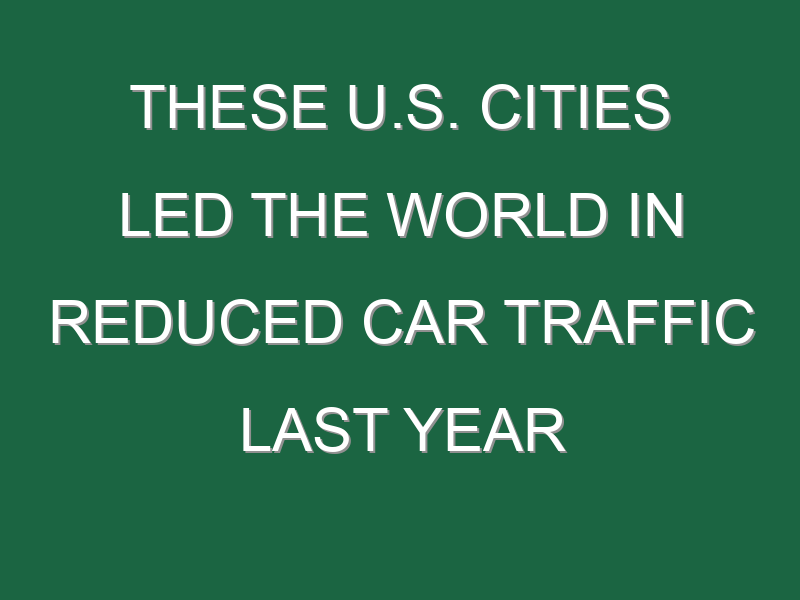Our mission to make business better is fueled by readers like you. To enjoy unlimited access to our journalism, subscribe today.
Urban traffic congestion declined significantly worldwide in 2020 because of COVID-19 lockdowns and economic slowdowns. But the impact was more persistent in the U.S. than in any other country, according to new research.
Of the 10 cities globally with the most days of below-normal traffic congestion, nine were in the U.S., according to mapping and navigation company TomTom. Minneapolis had the most persistent drop worldwide, with 219 days of reduced congestion, followed by Nashville with 213 days and San Francisco with 211 days.
Even today, U.S. traffic is far from normal, including in cities where there are no travel restrictions, said TomTom traffic data expert Nick Cohn. That’s a reflection of America’s lengthy and ongoing battle against the pandemic.
“Traffic levels in U.S. cities haven’t come back,” says Cohn, “even in late summer and early fall, when traffic levels were starting to come back in some cities in Europe [and Asia].”
Since the pandemic began, many U.S. workers have been doing their jobs from home, significantly reducing the number of cars on the road. Higher unemployment is also a factor as are people keeping their travel to a minimum, in line with health recommendations.
In its study, TomTom also ranked cities how much car congestion declined during 2020. By that measure, a different set of cities led the rankings, particularly mega-metropolises in developing nations.
Bengaluru, India (formerly Bangalore) had the steepest drop in congestion worldwide last year, down 20%. Manila was second at 18% followed by Pune, India and Jakarta, which tied with a 17% decline in traffic.
In the U.S., Los Angeles led with a 15% decline, representing the 10th biggest reduction worldwide in 2020. Meanwhile, traffic in San Jose, Calif. fell 14%, placing the city at 15th in the worldwide rankings.
Of the 416 cities tracked by TomTom’s data, 387 had traffic declines compared to 2019. Of 80 U.S. cities tracked, all had net declines in congestion.
The study’s findings were based on anonymized GPS data from 600 million drivers in 57 countries who use TomTom technology.
Unlike in the U.S., Chinese cities saw minimal declines in road traffic. In fact, congestion in cities including Changchun and Chongquing actually increased slightly compared to 2019, reflecting China’s success in controlling the virus through coordinated public health measures including rapid testing and stringent lockdowns.
The gap in traffic between the U.S. and China also reflects broader divergence in the economic impact of coronavirus in the two countries. While China’s economy has recovered quickly from the early impacts of the virus, the U.S. in December had continuing high job losses. According to projections from the Centre for Economics and Business Research, the pandemic’s impact will lead to China overtaking the U.S. as the world’s largest economy as soon as 2028 – five years earlier than previously projected.
Cities in Taiwan also showed robust traffic in TomTom’s data, reflecting that country’s success similar success in controlling COVID-19. The cities Taoyuan, Taipei, Taichung, and Tainan all showed slight increases in congestion compared to 2019, and few days of low traffic.
More must-read tech coverage from Fortune:
- PC sales have surged for at-home workers and learners during the pandemic
- Commentary: Tech’s underdeveloped moral compass is threatening our democracy
- Verizon to expand fast 5G to NFL stadiums, music venues, and UPS delivery drones
- IBM received the most patents in 2020. Here’s the rest of the top 20
- Chip Wars 2021: What AMD, Intel, and Nvidia announced at CES




